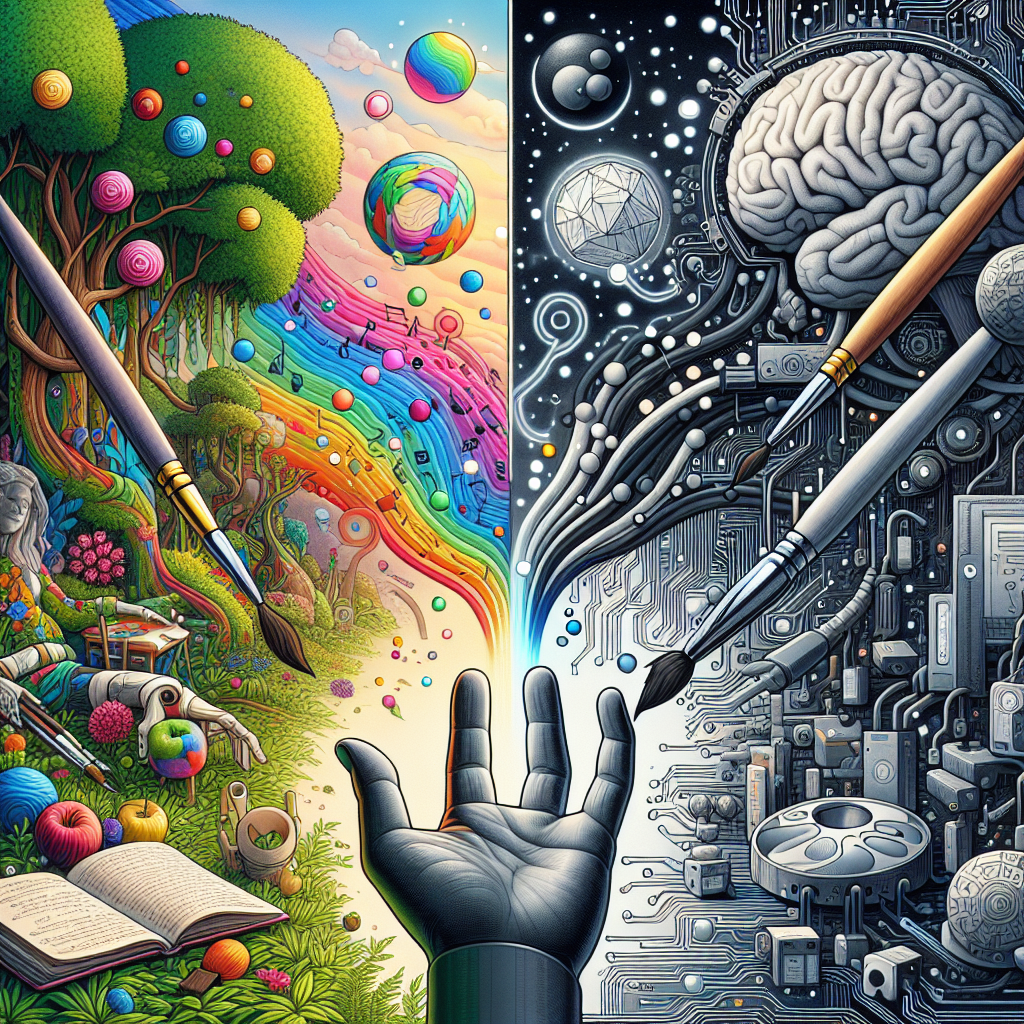Is AI Losing Its Creative Edge? Unpacking the Latest Findings on Language Models

Is AI Losing Its Creative Edge? Unpacking the Latest Findings on Language Models
Introduction
We’ve all marveled at the impressive capabilities of large language models (LLMs) like ChatGPT. Remember when these models first burst onto the scene, dazzling us with their ability to generate coherent text, brainstorm ideas, or even write poetry? Fast forward to early 2023, and it feels like we’ve all become wannabe authors, seeking creative inspiration from these digital companions. But have we reached a plateau in their creativity? Recent research raises some eyebrow-raising questions about whether the creative potential of LLMs has peaked. Let’s dive into the latest study that evaluates the creativity levels of various popular models and what it means for users and creators alike.
The Creative Landscape of LLMs
What Are Large Language Models?
Simply put, LLMs are sophisticated AI systems that process and generate human-like text based on patterns they learn from tons of data. They can assist in tasks like writing essays, composing emails, or even generating catchy social media posts.
However, suppose we are to truly harness the power of these tools. In that case, it’s crucial to understand not only their abilities but also their limitations. That’s where the latest study by Jennifer Haase, Paul H. P. Hanel, and Sebastian Pokutta comes into play, posing essential questions: Have LLMs genuinely become more creative over time? And how consistent are they in producing creative outputs?
An Eye-Opening Look at Creativity Tests
The Study Breakdown
In their comprehensive analysis, the researchers evaluated 14 widely used LLMs, including notable names like GPT-4, Claud, and Llama. They employed two creativity assessments: the Divergent Association Task (DAT) and the Alternative Uses Task (AUT). Notably, these assessments aimed to analyze not only how well the models performed relative to human creativity but also how consistently they generated creative ideas.
Traditional vs. AI Creativity
Before we jump to conclusions about LLMs, let’s clarify how human creativity has traditionally been assessed. Creativity usually revolves around generating new and useful ideas (think innovative problem-solving or artistic expression). The Divergent Association Task asks models to produce as many ideas as possible that’re semantically distinct from each other, while the Alternative Uses Task tests their originality by asking for different uses for common objects.
Surprising Results: No New Frontiers
In a twist that might defy our expectations, the study revealed no significant improvement in the creativity of LLMs over the past one to two years. In fact, when comparing recent models to earlier versions, the performance of GPT-4 was notably worse than in previous studies. It’s somewhat like waiting for the next blockbuster movie to come out only to find you’ve seen it all before!
Moreover, while all tested LLMs performed above the average human in the AUT, only a mere 0.28% of their responses broke into the top 10% of human creativity benchmarks. So, yes, these models can churn out creative ideas, but don’t expect any mind-blowing originality.
The Ups and Downs of LLM Creativity
Intra-Model Variability: A Double-Edged Sword
One standout finding was the intra-model variability, which refers to the differences in the creative responses a single LLM can produce from the same prompt. Even top-tier models like GPT-4 generated outputs ranging from mediocre ideas to genuinely original ones. It’s kind of like having a reliable friend who sometimes surprises you with bursts of brilliance but often defaults to mundane chit-chat.
This variability suggests that while LLMs offer creative assistance, users need to be mindful. Prompt design plays a significant role! The exact phrasing of a request can lead to drastically different outputs. For instance, one slight change in a prompt could shift the output from uninspired to innovative.
Model Selection Matters
Interestingly, the study highlighted substantial differences across the various models. Some models, like Llama 3.3, consistently outperformed others, suggesting that not all LLMs are cut from the same cloth when it comes to creativity. So, selecting the right AI companion for your writing endeavors can make a real difference!
Practical Implications: What This Means for You
Harnessing Creativity with AI
So, if you’re using an LLM for creative tasks, how can you extract the most out of it? Here are a few practical tips:
-
Engage Actively: Don’t take AI outputs at face value. Critically review and iterate on the suggestions provided.
-
Design Thoughtful Prompts: Experiment with how you frame your requests. Try various wording or context settings to see how responses differ.
-
Be Open to Variability: Understand that even the best LLMs can offer a wide range of responses. Sometimes, all it takes is a different angle to unlock a hidden gem.
The Ongoing Human-AI Collaboration Journey
This study serves as a reminder that LLMs are currently best employed as tools that complement human creativity rather than replace it. The partnership dynamic can yield significant benefits when humans provide context, framing, and iterative engagement with AI-generated content. As AI continues to evolve, these collaborative processes will require thoughtful design and reflexive practices.
Key Takeaways
Here’s a quick summary of what we’ve learned from the research:
-
No Peak, No Problem: The creativity of LLMs hasn’t significantly advanced over the past couple of years, and some models have even declined.
-
Consistency is Key: These AI models often produce wildly variable outputs, so it’s essential to test different prompts to find what works best.
-
Choose Wisely: Different LLMs show varying levels of creativity. Models like Llama 3.3 consistently outperform others.
-
Active Engagement: Don’t just rely on LLM outputs. Be an active creator by refining, contextualizing, and iterating the ideas they generate.
-
Co-Creative Future: The best results come from collaboration; blending AI’s capabilities with human ingenuity can lead to enhanced creativity.
As we continue exploring the creative capabilities of AI tools like LLMs, we will see that while they might be lacking in certain areas right now, there’s an exciting potential for them to act as valuable partners in the brainstorming and ideation process.
In the world of AI, creativity might not be fully unlocked just yet, but with a little experimentation and thoughtful interaction, we can help push the boundaries of what’s possible!
If you are looking to improve your prompting skills and haven’t already, check out our free Advanced Prompt Engineering course.
This blog post is based on the research article “Has the Creativity of Large-Language Models peaked? An analysis of inter- and intra-LLM variability” by Authors: Jennifer Haase, Paul H. P. Hanel, Sebastian Pokutta. You can find the original article here.




